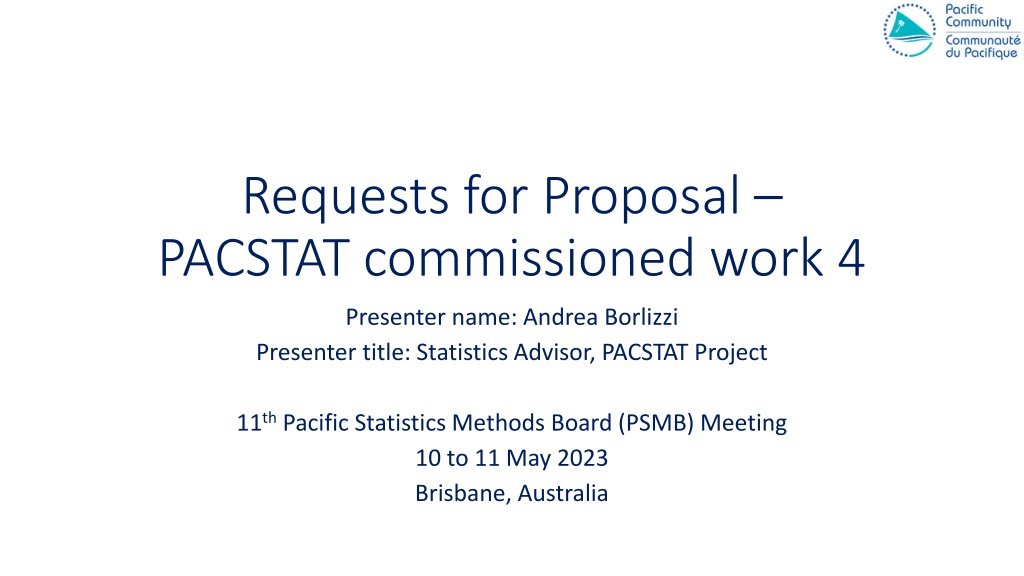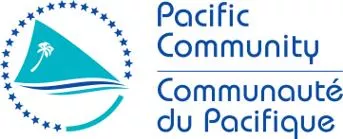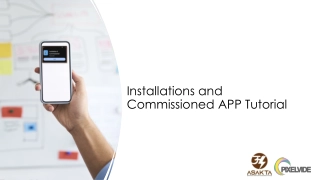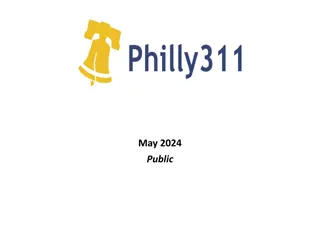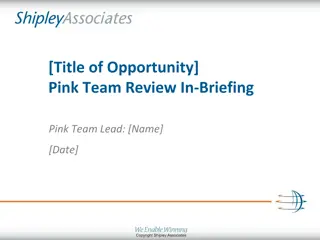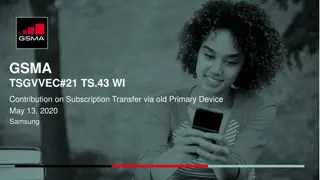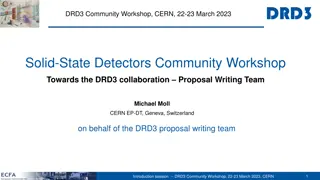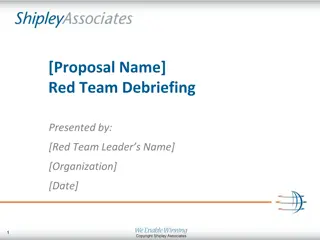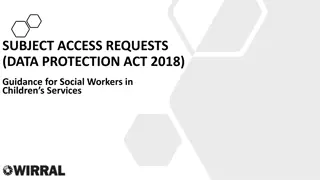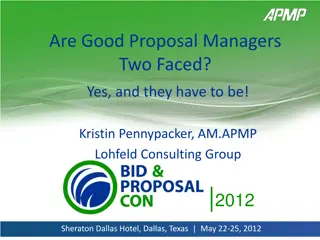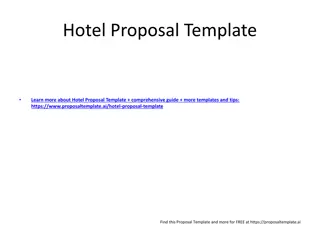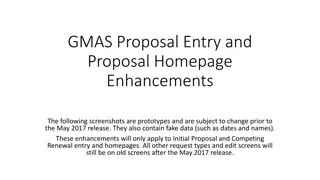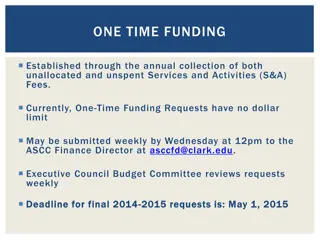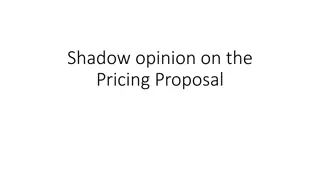Requests for Proposal–PACSTAT commissioned work 4
The PACSTAT project aims to enhance welfare data collection in Pacific Island Countries through various components like Pacific Statistics Methods Board meetings, commissioned works, and alternative data collection methods. Proposals for commissioned works on climate change and poverty analyses were received, highlighting the project's focus on improving statistical methods in the region.
Download Presentation

Please find below an Image/Link to download the presentation.
The content on the website is provided AS IS for your information and personal use only. It may not be sold, licensed, or shared on other websites without obtaining consent from the author.If you encounter any issues during the download, it is possible that the publisher has removed the file from their server.
You are allowed to download the files provided on this website for personal or commercial use, subject to the condition that they are used lawfully. All files are the property of their respective owners.
The content on the website is provided AS IS for your information and personal use only. It may not be sold, licensed, or shared on other websites without obtaining consent from the author.
E N D
Presentation Transcript
Requests for Proposal PACSTAT commissioned work 4 Presenter name: Andrea Borlizzi Presenter title: Statistics Advisor, PACSTAT Project 11thPacific Statistics Methods Board (PSMB) Meeting 10 to 11 May 2023 Brisbane, Australia
Outline (To be deleted) PACSTAT (see my contract and the ISM ppt) Commissioned Works (see the doc sent by Sandra on April) The 2 proposals received Climate Change Phase 2 Engel s Law Comments/suggestions on the proposals received Low participation of countries in proposing (see previous PSMB meetings) Why does this happen What can be done to improve? What are PICTs research priorities? Admin data? See Mike s ppt at ISM 2022 (future research priorities) See Carpark (Fiji s Conference) See summary of PSMB meetings (ppt prepared for Vince)
The PACSTAT Project and the Commissioned Works (CW) PACSTAT project: an International Development Association (IDA) funded project to be implemented over the period 2020 2025. Overall objective: to improve the quality of welfare data collection and the accessibility to comparable welfare data in the Pacific Island Countries. The Project includes 3 components: 1. Pacific Statistics Methods Board Meeting twice a year; PSMB Commissioned Works ( data Dissemination; Climate Change; data Anonymisation) Regional conferences and Sub-regional workshops Guidance Notes 2. Institutional Strengthening and Implementation support Technical assistance; trainings 3. Alternative data collection methods Technical support for innovation; Innovation experiments: Tuvalu LFC; Samoa FAFH; Vanuatu (Data Science Driving Innovation in Climate Change)
Innovative Experiments vs Commissioned Works Innovative Experiments vs. Commissioned Works I.E.: medium-term research projects that test alternative data collection methods implemented over a period of around 1-2 years can attract financing of up to USD 250K CW: short-term statistical research projects, such as desk-based literature or methodological reviews, aiming to support NSOs and the PSMB to make decisions and recommendations on certain statistical issues. implemented over a period of around 6-months can attract financing of up to USD 25k
The RFP process and the proposals received A request for proposal was sent on Friday, 21 April 2023, to: Heads of planning and statistics, and Stakeholders of the Pacific Statistics System Deadline: 5 May (2 weeks) Two proposals received for CW (from SPC): 1. Implementing phase 2 of the CW on climate change data collection; 2. Engel s law and poverty analyses in the Pacific No proposals received for IE
Proposal 1: Closing Data Gaps to Understand the Socio-Economic Impacts of Natural Disasters and Climate Change in the PICTs Phase 2 CW2: Natural Disasters and Climate Change Core Module and Sourcebook standard methodology to regularly collect comparable data on the impact of natural disasters and climate change at the household level to support appropriate measures of mitigation and adaptation and effective public investments. A field-test of the core module will take place in Kiribati at the end of the life- cycle of the present CW. Discussions to include this module in other PICTs undertaking household collections in 2023 have also commenced.
Proposal 1: Closing Data Gaps to Understand the Socio-Economic Impacts of Natural Disasters and Climate Change in the PICTs Phase 2 While multiple challenges were overcome in the Sourcebook design, implementing monitoring programs that fit the information needs of PICTs should respond to the following questions: 1. What is the most accurate periodicity of data collection for measuring the impacts of natural disasters and SOE events? (NB: SOE such as irregular rains, sea level rise, river/coast erosion were not included in Phase 1) 2. Is the past 12 months the most accurate recall period? 3. Is the survey instrument the most effective way to measure socio-economic climate-related impacts? 4. Do the survey instrument sections cover the full spectrum of climate change socio-economic impacts? 5. Does the survey instrument need to be translated into local languages? 6. Does the Sourcebook require the development of enumerator guidelines and training materials to be developed with NSOs? 7. What is the duration and cost of implementing the survey? 8. Is there a valid composite indicator that can be developed to summarise the climate change situation in a country? All these research questions can be addressed with phase 2 of the research project.
Proposal 1: Closing Data Gaps to Understand the Socio-Economic Impacts of Natural Disasters and Climate Change in the PICTs Phase 2 Why? Climate change and disaster risk management are central themes in most National Development Plans, Regional Frameworks and the SDGs, yet little data is available at sub- national level. The proposed core module and Sourcebook have been developed to address this gap. The information needs supporting the Sourcebook are reflected and articulated in the most recent acts, policies, development plans and climate vulnerability assessment of most PICTS countries. How? Field testing of the Sourcebook and developing implementation materials will enhance the capacity of NSOs to implement the survey in a cost-effective way and support countries to produce relevant data to calculate climate-change-related indicators. At the regional level, this will enable comparing results across the Pacific using consistent indicators aligned to the Paris Agreement Work Programme (PAWP) and the four complimentary international frameworks linked to it: the Framework for the Development of Environment Statistics (FDES, 2013), the Sendai Framework for Disaster Risk Reduction (Sendai Framework, 2015), the Disaster-related Statistics Framework (DRSF, 2018) and the Global Set of Climate Change Statistics (Global Set, 2022).
Proposal 2: Engels law and poverty analyses in the Pacific In welfare analysis, consumption is frequently used as a proxi-value for income. Thus, in small economies, poverty indexes are computed using household consumption in place of income. It is crucial to ensure consumption correctly mirrors income. The analysis of some Pacific countries HIES shows that the share of food expenditure may not decrease with increasing total expenditure. Deviation from the Engel s law, stating that food expenditure decreases as income increases. The analysis will use different approaches of measurement of food consumption and total expenditure.
Proposal 2: Engels law and poverty analyses in the Pacific The Engel s law will also be assessed for specific groups of populations, based on the area of residence and socio-economic and demographic characteristics of the households. The research will use HIES data for a dozen of countries. In order to assess possible changes in Engels s law over time, data sources include at least 5 sources for the recent years (2015 and more) and 5 sources of older periods. Why? When the Engels s law does not hold, the reliability of food consumption data may be questionable, as well as those of the total consumption. Therefore, this research is useful for the production of data that are relevant and reliable. Main outcome: Research results may lead to changes in the construction of consumption aggregates, for example by including remittances received (the current design does not). If Engel s law holds with this alternative method, then we can reasonably include remittances in the construction of the expenditure aggregate. This may also influence the HIES questionnaire on the way remittances are collected.
Discussion points Comments and feedback on the proposals received Low participation from countries in proposing CW and IE: Why does this happen? What can be done to improve? CW5; IE4 & IE5: what are the research priorities for the future? Population-based registers? Resident enumerators? Intra-household dynamics? (allocation, distribution ) Seasonality? From 2023 Regional Conference (Nadi) Developing methods for automatic field checks? Supplementary modules? (migrant workers; own-use production; etc.)
Thank you extandreab@spc.int
